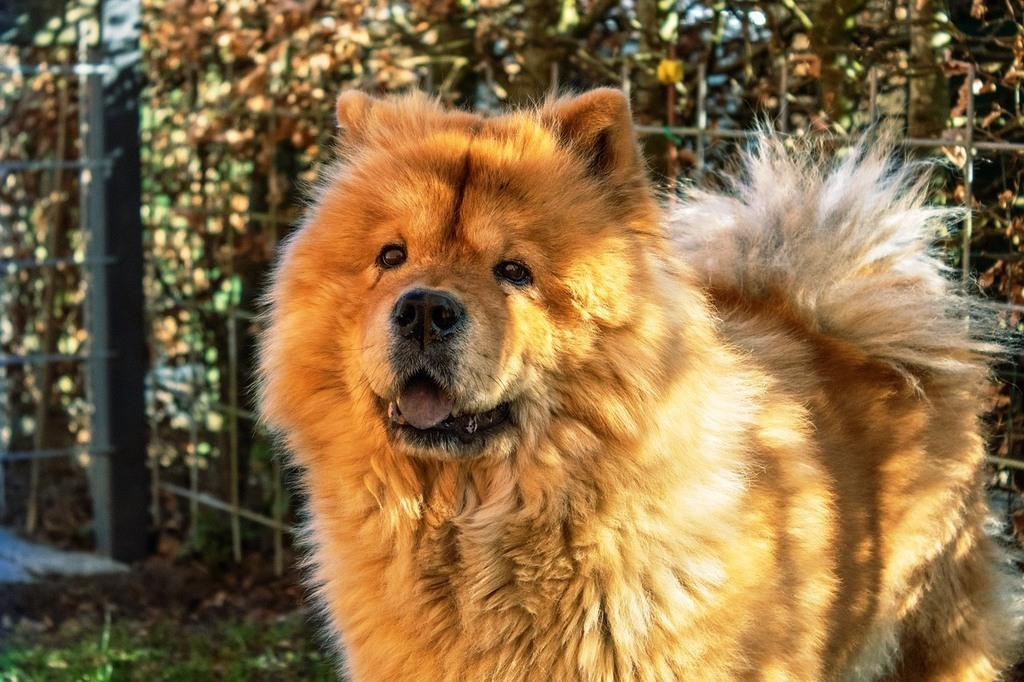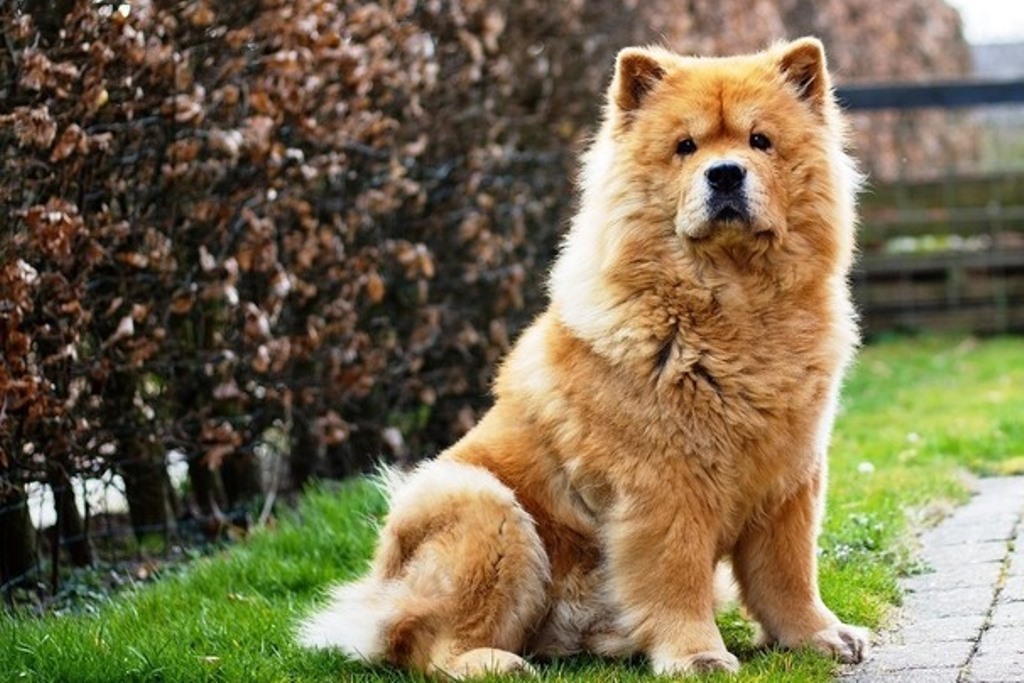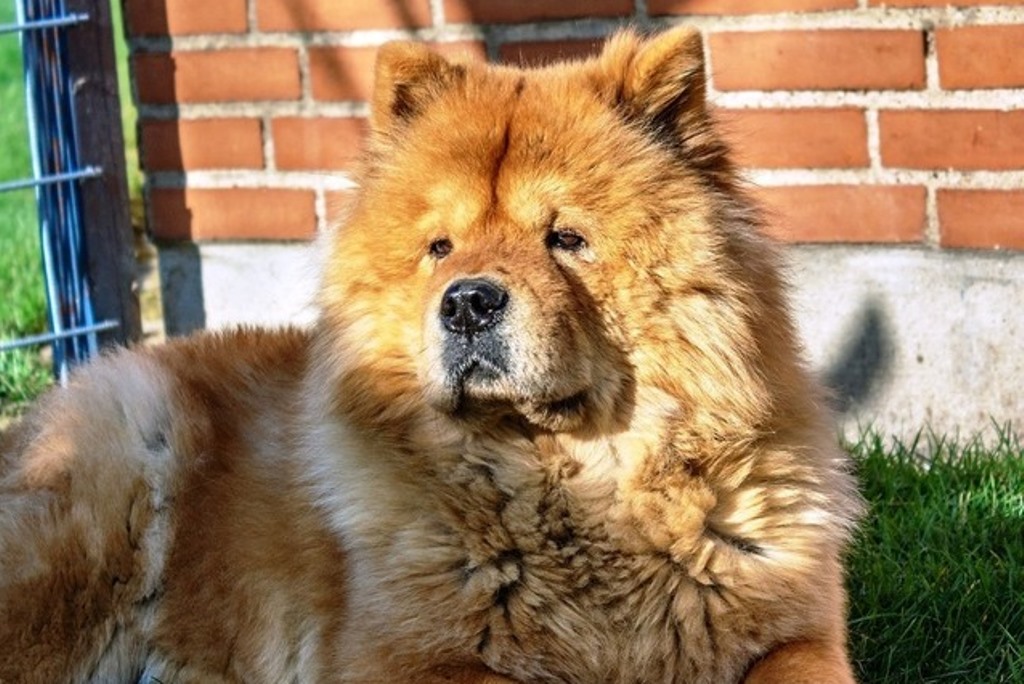
Remarkable Traits of the Chow Chow Dog Breed
In the origins of the chow chow dog breed there is a set of legends. These were most probably created because this dog has a purple tongue and relate to the story of how it got that way. They are very curious and I will tell you a couple of them.
One tells of a seriously ill monk who, in the middle of a very cold winter, was helped by his dogs, chow chows, to look for wood, because he was no longer able to do so. So his dogs went into the woods to collect wood, but instead they found charred logs from a fire, and carrying them with their mouths, they burnt themselves and their tongues turned purple forever.
In another there is even talk of Buddha, who is intent on painting the sky blue in the company of his own dog, a chow chow, who, to help his master, began to clean with his tongue all the drops of sky that fell to the ground, forever turning it purple.
Outside of legends, its origins go back thousands of years and it is perhaps the oldest Chinese dog breed, and it is still unclear whether this breed developed from Spitz-type dogs or whether the latter developed from the chow chow. The peculiarity of the purple tongue is not unique in the animal kingdom, some types of bears also have this peculiarity.
Some palaeontologists have speculated that there may be an evolutionary link and that they may be descended from the lemucyon, an animal somewhere between the ancestor of dogs and daphoneus, the ancestor of bears. And another thing chow chows have in common with the latter, they have 44 teeth like bears, instead of the 42 of dogs.
This dog has had many uses in a wide variety of fields, it was used as a sled dog, hunting dog, livestock guardian and also unfortunately was eaten. Even today, their fur and meat are much sought after by the Chinese and Koreans who often breed them for food, along with many other dogs, both purebred and not. In fact, the name chow chow may derive from the Chinese word ‘chou’, which means edible, although another school of thought believes that this name derives from a dialect term meaning rarity, this dog being an oriental rarity. But there are many other explanations for this name, so the true one will never be known.
In the Western world this dog arrived towards the end of the 1800s and was immediately a great success. In China, on the other hand, things went differently because many specimens were eliminated during the Cultural Revolution. Towards the end of the 19th century, it was possible to find some chow chows in English zoos, because they were thought to be semi-wild dogs. It was the favourite dog of many illustrious men such as Konrad Lorenz, Sigmund Freud and even US President Calvin Coolidge.
Character of the chow chow dog breed

The chow chow is a loyal and calm dog, but independent and detached. It likes to bond with one person, at most two, and dislikes confusion, frenzy and noise. He needs daily exercise, so you must allow him long walks, but without haste and following his nose very quietly. It can also live in a flat, but because of its size it would be better in a house with a garden, where it can spend several hours a day. It is not a dog that likes to play and because of its peaceful nature and need for calm is not suitable for families with children.
It is not always willing to socialise with other dogs, although it does not show itself to be aggressive or biting, so socialisation from puppyhood, regarding people and other dogs, especially smaller dogs, or dogs of its own breed, must be done constantly. It has to be said, however, that this dog is not suitable for inexperienced people; it does not like impositions and tries to maintain an attitude of command, so training it is certainly not an easy task and certainly requires the intervention of an expert.
He has no problem being alone, in fact I would say that he wants to be alone from time to time, and is an excellent guard dog, if properly trained. With strangers, in fact, he is rather reserved, and if he encounters them in his own territory there is the risk that he may even become aggressive. It has a hunter's temperament, so it would be better for it to run free, when perfectly trained, otherwise there is a risk that it will not respond to its master's call.
This breed hardly ever barks, and never inappropriately. It is a dog that seems to encapsulate all the pride and confidence of the bear and lion, to which it closely resembles. Most chow chows are not very fond of dog sports.
Appearance of the Chow Chow dog breed

The chow chow is a medium-sized dog, its height at withers is around 40-50 centimetres and its weight ranges from 24 to 34 kilograms. It is a solid, compact dog, superb and full of dignity. Of great power and strength, very muscular and with a strong bone structure. His bearing is proud and dignified and his lion-like appearance comes from his thick mane.
His walk is aristocratic, in fact he always walks with his head held high and with a rather short stride. One of its characteristics is its feline gait, determined by the fact that it walks on its fingertips and is reminiscent of a cat's walk. There is not much difference in size and weight between males and females.
It is morphologically classified as wolfish. The trunk is straight, the back is short with a powerful lumbar region; the thorax is large and tends to slope downwards. The tail carried on the back has a high hairline. The limbs are well muscled and especially the hind limbs have a well developed thigh. The feet look like those of a cat with a round shape and small size.
The head is large, massive and heavy, as is the entire bone structure of the dog. The skull is broad and narrow, the truffle is black, which in white specimens may be light in colour, but always large. The eyes are of medium size with an oval shape and generally dark in colour. Facial wrinkles give the dog a sullen expression. The ears are small, thick, slightly rounded at the tip, straight and stiff. The tongue is characteristic of the breed and is bluish-black.
Another feature that makes this dog unmistakable is its coat. In fact, it has a thick mane that gives it that special lion-like appearance. The coat can be longer or shorter, although it is usually long and is soft and abundant. It also has a thick, very soft undercoat. The neck tends not to be visible due to the fur collar, especially in males. The most common colours are black, red, fawn, blue, cream or light.
Care and health of the Chow Chow dog breed

In addition to the classic diseases that all dogs can develop, the chow chow in particular can suffer from hip and elbow dysplasia, arthrosis, ligament problems, dislocation of the kneecap and skin diseases such as allergies, pyoderma and alopecia. It is also vulnerable to eye diseases. The folds on the neck being numerous are easily inflamed and therefore need to be checked and cleaned regularly.
Its life expectancy is about 10-12 years.
As for the care of the coat, this is rather demanding. In fact, the chow chow must be brushed daily to prevent the dense coat from becoming matted. Particular attention must be paid to the hair behind the ears and, as already mentioned, on the collar, as the hair in those areas felts very easily.
For food, the chow chow loves rice and eats a lot of it. Therefore a diet of rice, meat and boiled vegetables would be ideal for this dog, although the quantity must be controlled as it tends to eat more than necessary.






















